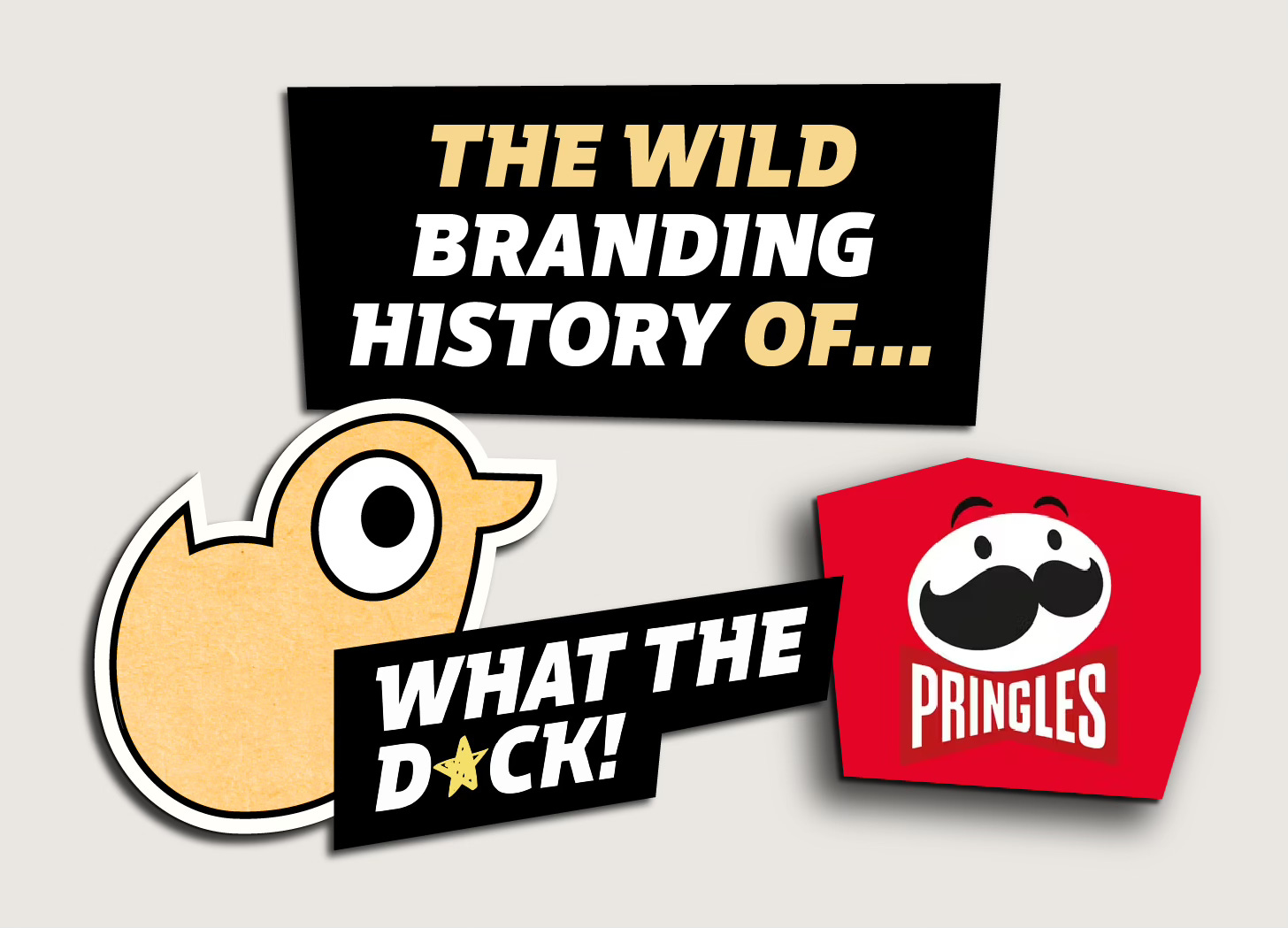The Wild Branding History of: Pringles
The Story Behind Pringles’ Name, Mascot, and Memorable Marketing
“Pringles’ original intention was to make tennis balls... But on the day the rubber was supposed to show up, a truckload of potatoes came.
Pringles is a laid-back company, so they just said ‘F*ck it, cut em up!’”
Or so goes the joke by the late comedian Mitch Hedberg.
Pringles wasn’t founded by a tennis ball company—but it was created by a soap manufacturer. And the story only gets stranger from there.
In fact, Pringles might be the most over-engineered snack ever made: a lab-built chip developed in the 1950s by a chemist who, decades later, requested to be buried in one of its cans.
From a failed taste test and early competitor backlash over semantics that required the U.S. Food & Drug Administration to intervene, to a pre-fame Brad Pitt cameo and a Wikipedia prank that accidentally renamed its mascot, this is the bizarre history of one of the world’s most recognizable snack brands.
The Signature Shape
In the mid-1950s, Procter & Gamble—known mostly for soap at the time—tasked a chemist named Fredric J. Baur with fixing everything wrong with potato chips. He set out to create one that wouldn’t break so easily, wasn’t greasy, stayed fresh longer, and didn’t need to be shipped in a bag of air.1
At the time, P&G had just begun expanding into food and quickly became the world’s largest supplier of frying oil to chip makers. Making their own chip seemed logical. But by 1958, the project was shelved. Baur had nailed the shape and texture—but not the taste.
He was still so proud of the design that decades later he asked to be buried in a Pringles can. His family thought he was kidding. He wasn’t. When he died in 2008 at 89, they fulfilled his request.
In the mid-1960s, P&G revived the perfect potato project with chemist Alexander Liepa. But the machine that made Pringles possible came from a different kind of mind entirely: Gene Wolfe, a Catholic science fiction writer who also worked as an engineer at the time. Wolfe, best known for The Book of the New Sun and praised by writers like Neil Gaiman as one of the genre’s masters, helped design the system that baked the chips into their signature hyperbolic paraboloid shape.2
By 1968, after a few test launches, Pringles finally hit the market. But the road from development to market testing wasn’t easy.
The Origin Of The Name
The brand’s early challenges weren’t limited to the chips themselves. Naming the chip would prove to be a roller coaster ride as well.
Keep reading with a 7-day free trial
Subscribe to Branding Bullsh*t to keep reading this post and get 7 days of free access to the full post archives.



